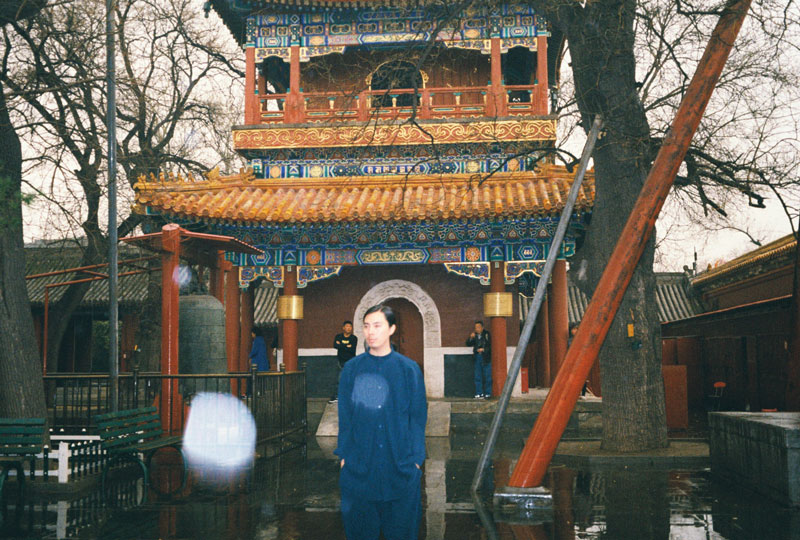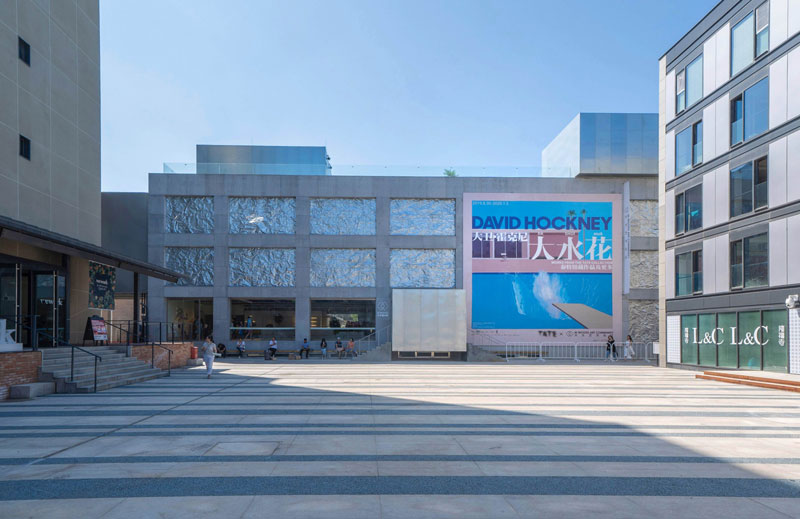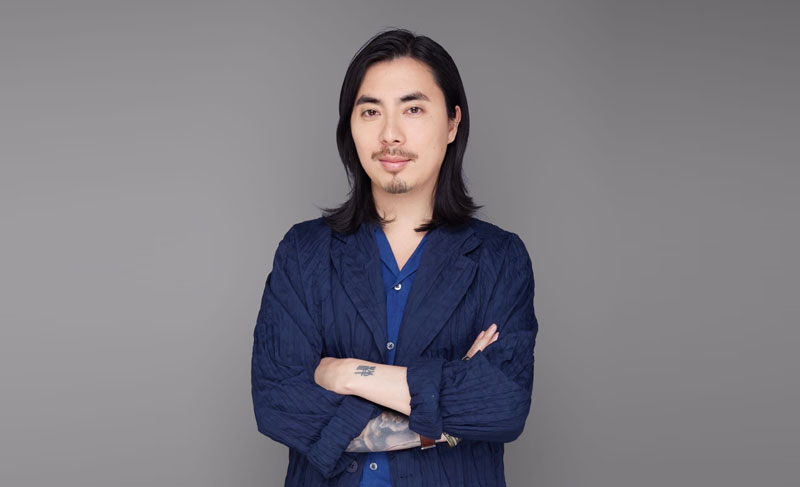
Victor Wang: “I’ve always somehow enjoyed seeing the East inside of the West”
#curator #interview #victor wangBy Irene Calvo
A few months ago Victor Wang was appointed Artistic Director of M WOODS Museums in Beijing, China. Wang has an impressive career as a curator, art critic and cultural manager. He has curated numerous exhibitions in Asia, Europe and Latin America and he also studied an MA in Curating Contemporary Art at the Royal College of Art in London; he graduated from the 7th Gwangju Biennale International Curator Course, South Korea, had curatorial research residencies at Taipei Fine Arts Museum (TFAM), Taiwan, and Tokyo Arts and Space (TOKAS), Japan, and wrote for art periodicals. Furthermore, Victor Wang is the founder of the Institute of Asian Performance Art, an international network to deepen the awareness and understanding of the history of early performance art in Japan, Korea, China and Taiwan.
Through this interview, we can learn more about his vision of art and life, the difference between contemporary art and Dangdai Yishu (the Chinese phrase for “contemporary art”), the cultural exchanges that exist in the curating practice, how curating was for him when he was an independent curator and how he conceives curating now at the M WOODS Museums… Also, Victor makes a reflection about how to rethink the museum post-COVID and how the outbreak has helped to clarify the main objectives of the Museum.
All these issues and many more are addressed in this thrilling conversation with Victor Wang.
When did your interest for contemporary art start? And what about curating exhibitions?
I arrived to contemporary art through contemporary life. I was raised in a community and family where art and intersectionality was how you found your footing in the world. Creativity and community were important tools for cross-cultural communication, and for healing. I guess I saw art and exhibitions as similar spaces.
Having parents who immigrated to Unceded Coast Salish Territory in the ’70s, from China and Chile, language and culture for us were things that were malleable and adaptable from the outset. In the 1980s, curator Harald Szeeman called the museum a “house for art”: I suppose I saw that house as a type of cooperative that had a social decolonial function.
I got a strong sense of the potential of visual tradition moving between China and Chile as a kid. However, I also owe much of my early visual and critical development to my time living and growing with xʷməθkʷəy̓əm (Musqueam) people, where I had friends who were traditional carvers, storytellers, and elders who were all dealing with larger structural and colonial issues. Who were rethinking care and knowledge, and how objects and histories enter museums and institutions. Much of this still colours my page today.
You have studied and worked in many different regions, such as Europe, Latin America and Asia. Are there big differences between these countries when we talk about art curating?
There are considerable differences. I don’t see all contemporaneities as the same or unified. Working between regions I began to realise that the contemporary had different properties from the now. For example, take the term Dangdai Yishu (the Chinese phrase for contemporary art) versus “contemporary art”. They have different histories, systems, communities and languages that both overlap and disconnect. You don’t see that term being used in China until the 1990s, and by then many parallels and simultaneities had already developed, both locally and regionally.
But I believe this is already generally understood. Many early Euro-American curators struggled with this concept in the early 1980s, if not earlier, and you see this with exhibitions such as Magiciens de la Terre or Primitivism in 20th Century Art: Affinity of the Tribal and the Modern, as opposed to what was occurring outside of those “centres”, such as The Second Havana Biennial, or the China/Avant-Garde exhibition in Beijing, which all took place in the 1980s. Much of this Western museological impulse to show an image of the non-west also derived from the ideology and practices of early ethnographic museums that created spaces of difference.
As a person of mixed cultures, I’ve always been more interested in operating within the hyphen, you know, between Asian-Latinx, between Asian–African. I recently spoke about this with artist Lawrence Abu Hamdan. Also, exhibitions that challenge the binaries of the art world, such as Rasheed Araeen’s The Other Story: Afro-Asian Artists in Post-War Britain (also in 1989), The LYC Museum & Art Gallery in the U.K. or even earlier, for example when Japan’s Hi Red Center (with Genpei Akasegawa, Natsuyuki Nakanishi, Jiro Takamatsu) performed their Street Cleaning Event during Fluxfest in New York (1966)!. But there are many examples one could give here. Better yet, just see the great work being done in the margins currently.
I’ve always somehow enjoyed seeing the East inside of the West.
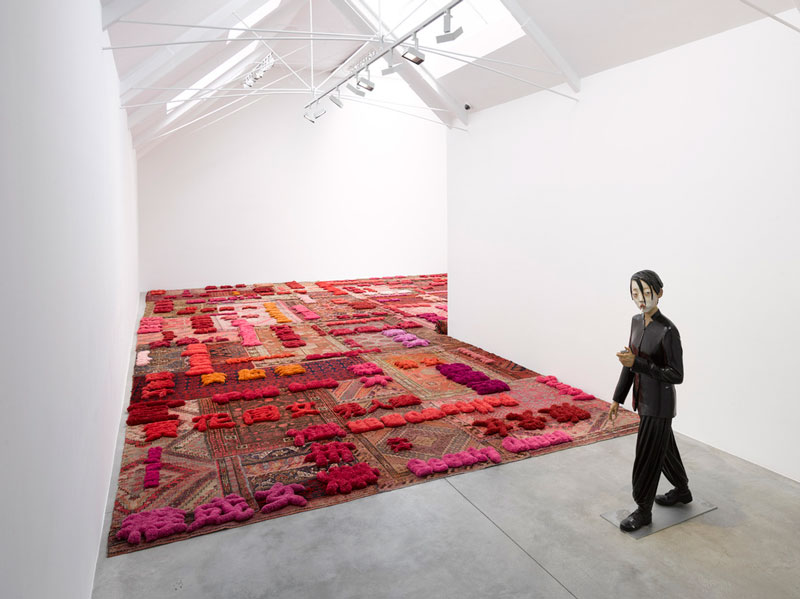
Installation view “Afterimage: Dangdai Yishu” at Lisson Gallery, London, 2019, curated by Victor Wang. © the artists; courtesy Lisson Gallery
You said once that all your projects are interrelated; do you see the curator job as one big ongoing project?
When I was an independent curator, my projects were more like conversations: ongoing and unfinished. I always felt like the exhibition was really just beginning when it ended, in terms of what it “did”, and often would take months, if not years, to understand their encounters and impacts. This led me to revisit past themes and ideas, reworking them in each subsequent show, whether that was a specific display style that was shared with me by an artist or a relevant text I later discovered that changed the way I perceived the original idea.
Working institutionally, and at M WOODS, I wanted to take a different approach: one that gave more consideration to community and audiences, especially non-art audiences. And to think more about the creation of structures and long-term initiatives that could have a wider impact institutionally. So long term structural changes rather than exhibitions.
You are the founder of the Institute of Asian Performance Art, an international network to deepen the awareness and understanding of the history of early performance art in Japan, Korea, China and Taiwan, how did this project arise? What is the situation of performance art in these countries right now?
Operating in Euro-America I didn’t see many institutions that were run by Asians or BIPOC, and I felt there was a real lack of art historical integration occurring. So the Institute of Asian Performance Art (IAPA) began in part as the result of this art-historical and institutional dilemma, a necessity that had become increasingly evident in 2010 during the last two years of my projects and research on the history of performance art in East Asia.
IAPA was conceived in recognition of the need to further construct and contribute to an understanding of “performance” from a non-Western perspective, and to think through Asia not as a place, but as a method of action and understanding.
This was especially important during a period when many institutions began to adopt and develop performance programmes and departments, yet still focused on a Euro-American narrative.
I was also interested in the different political, economic, and social environments that prevailed in the many countries in the region known as East Asia, from military dictatorship (Korea) to post-Cultural Revolution (China), post-martial law (Taiwan) and post-Allied occupation (Japan), when live art in these regions began to develop. And what could these histories teach the diasporas? There are so many great historians and curators who have developed and documented these movements and periods within the region, so I also wanted to give them a platform to connect and converse with.
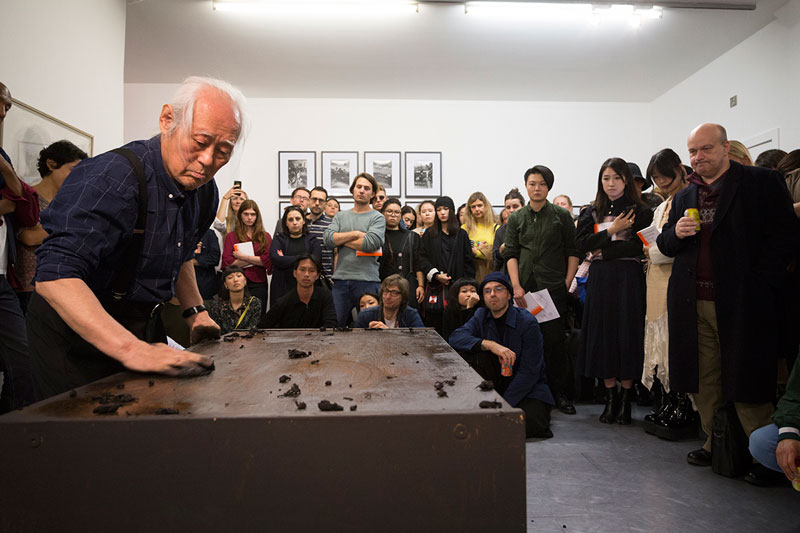
Kim Ku Lim re-stages his 1974 work “Wiping Cloth” at the opening of the exhibition for his first UK performance. IAPA. Photo by Christa Holka.
In many of your curatorial projects we find Asian artists in European institutions. In your opinion, is there an increasing interest for Asian art in Europe? And what about in Asia, how are the European artists received there?
Well, actually there wasn’t that much visibility or opportunity for Asian peoples when I first started curating in Euro-America. Much of my work was in an effort to make those spaces possible for artists coming from East Asia to occupy. Since then I have taken a longer historical view, and have started to rethink these places not as separate binaries, but as entangled elements that overlap.
Looking at the art historical narrative of contemporary art in East Asia as a non-linear or non-singular event.
The deeper one dives into Dangdai Yishu (the Chinese phrase for ‘contemporary art), for example, one finds that the beginnings of contemporary art in China were always entangled with outside forces and sympathetic non-Chinese individuals, which were the outcome of often polarizing polices and personal interest that mix the local with the non-local.
For example, when you follow China’s non-linear development, you begin to see that contemporary commercial spaces and independent artist initiatives began to develop before contemporary art museums and institutions did. So what does that do to contemporary art’s development and dissemination? Even curatorial programs at universities are only a recent phenomenon. But artists like Wang Youshen, with his diplomatic compound project, documents this period, as do the photographs of Rong Rong, the films of Wen Pulin and many others if you’re interested in looking.
So what I mean is that my independent practice has followed this flow of transnational integration that attempts to rethink these East and West binaries whilst creating spaces for these practices.
It’s like the cross-current of Guy Ullens opening UCCA and Li Yuan Chia opening his LYC Museum in the U.K. in the 70s, Fei Dawei advising the curators of the exhibition Magiciens de la Terre and the work of Hans Van Dijk , Tehching Hsieh doing performances in New York to Ma Liuming performing for Gilbert & George in Beijing.
It’s not that any of these things are new, it’s just that Euro-America forgot it is part of Asia.
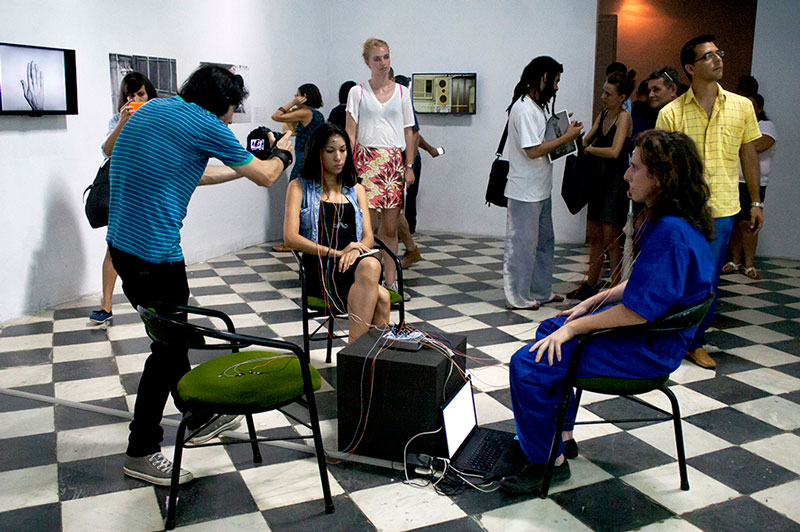
Installation view. “Ensemble sin órganos”, Centro de Arte Contemporáneo Wifredo Lam, 2016, Havana. Co-curated by Blanca Victoria López and Victor Wang
You have developed numerous projects, but is there a project you remember especially for its intensity, its challenges or a learning process? Could you tell us about it?
Hmm. This is a hard question. Perhaps the exhibition Ensemble sin órganos (Ensemble without organs), co-curated with Cuban curator Blanca Victoria López, at the Centro de Arte Contemporáneo Wifredo Lam, Havana, in 2016.
I owe so much to the community in Havana, and to my friends and family there. I continue to learn from and appreciate their generosity and ingenuity.
I believe it was the first international performance-based exhibition to take place in the museum, and we moved mountains.
It was in Havana that I learned that art is for life, and not for art.
But also the exhibition Lawrence Paul Yuxweluptun: Time Immemorial (You’re Just Mad Because We Got Here First) at The High Commission of Canada in the United Kingdom, in 2018.
As it was an absolute honour to work with the legend that is Lawrence Paul Yuxweluptun, and to address the colonial history of Canada in such a distinguished Canadian institution.
The exhibition was a critical response to the recent celebration of Canada’s 150 years of confederation, and the continued amnesia Canada has to its own colonial history against the Indigenous peoples.
It was also the first solo exhibition by a Canadian First Nations artist in the Canadian High Commission’s gallery in London. Crazy, right?
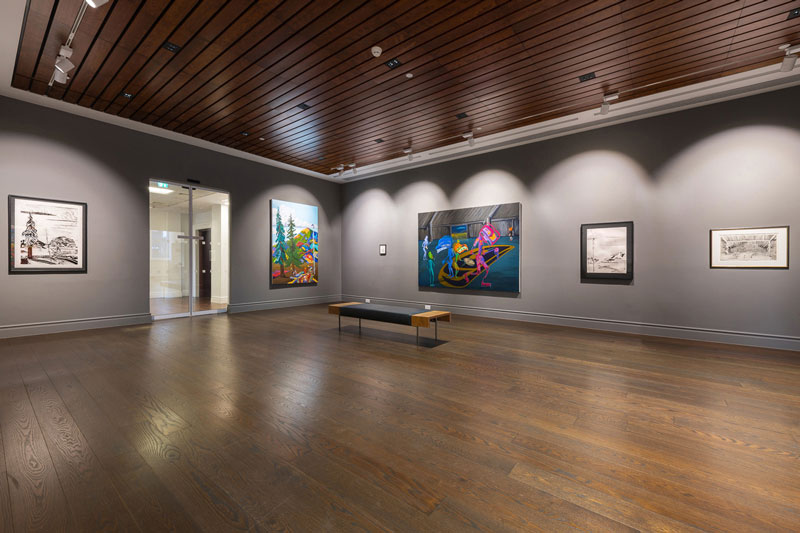
“Lawrence Paul Yuxweluptun: Time Immemorial (You’re Just Mad Because We Got Here First)” curated by Victor Wang at The High Commission of Canada in the United Kingdom, 2018
On October 2019 you were appointed new Artistic Director and Chief Curator at the M WOODS Museum in Beijing. Then you affirmed that you wanted to develop new ways of supporting contemporary art in this region. What are your plans about this idea? In what situation is the museum now?
I’m interested in rethinking the museum post-Covid. And I’ve been thinking a lot about the importance of care, and what support and safety means today.
Living in China post-Covid gives you a different experience of the types of spaces in which the arts can comment and reflect. As an Artistic Director I think a lot about structural changes: for example, just before the outbreak we had recently opened Guī, the museum’s new night club and hybrid space for live, time-based art, music, dance, and new media. This was a great leap forward as it allows us to activate and engage with different forms of contemporary culture, positioning the space and functions of club culture as an integral part of contemporary art, performance art and experimental sound. I think we’re now one of the only museums in the world with a night club.
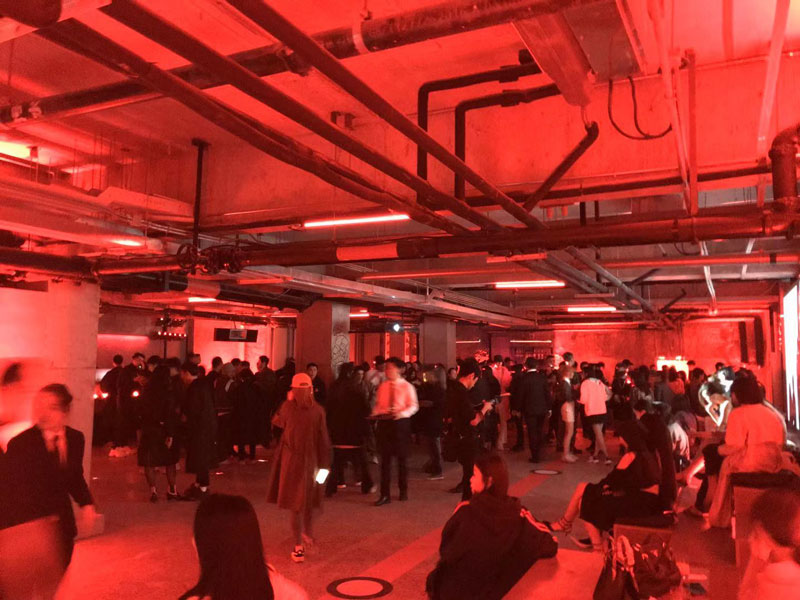
Guī, the M WOODS’ new night club and hybrid space for live, time-based art, music, dance, and new media
During the outbreak we developed an important online project called Art Is Still Here: A Hypothetical Show for a Closed Museum which looked at ecology, nature, extinction, isolation and kinship. I think this also speaks to the idea of support I was referring to. With over 50 artists participating internationally, we were one of the first museums to introduce online programming as a way to both protect our staff, community and as a way to continue to support artists during the lockdown. In the context of Mainland China, being online and sharing a variety of opinions and perspectives through art means something different from what it would in Euro-America. I’m still humbled by the strength of artists during this period.
Returning to the theme of care, our next exhibition opening in our 798 location will look at care and collections as new way of working and thinking locally. The title of the show is Collective Care: A House With Many Guests: we will construct a network of sharing collections locally as a relevant model for exhibition-making in China during our new distinctive post-Covid-19 present. Eight locally based collections will be invited to show alongside the museum’s collection.
And I will continue to work towards greater inclusion, push for more diversity and eventually free entry to the museum, I hope.
Lastly, could you tell me some artists that you would like to work with?
I’m currently working on bringing more BIPOC artists and thinkers over to China, as there are some important histories and overlaps that need to be further explored, especially in relation to of black radical thinkers and their influence and exchanges with China in the 1960 and 1970s.
And also, Black Lives Matter.








